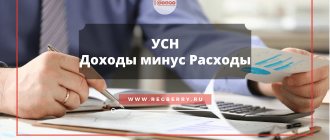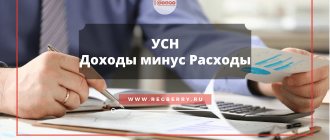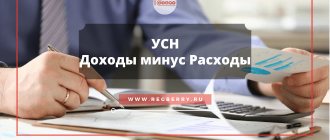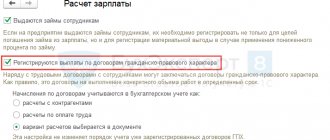What is VAT
VAT is an indirect tax that is paid on the sale of goods, services and property rights. Its payment occurs as follows.
- The factory orders linen to sew a batch of summer dresses. The fabric manufacturer issues an invoice including VAT.
- While seamstresses are making dresses, economists are calculating their cost. They look at how much money is spent on tailoring. The VAT paid for flax is also included in this list, but is recorded as a “tax credit”.
- The dresses are ready and sent to the company store. The calculation of the price tag includes the cost of the goods, the share of profit and the VAT itself.
- When the dresses are sold, the company counts the profit. 20% is deducted from the total amount. The buyer has already paid for them. Then the money goes to the Federal Tax Service.
From the whole situation it is clear that the entrepreneur pays the tax, but the buyer provides it.
Basic concepts of VAT
Object of VAT taxation:
- sale of goods, works, services on the territory of Russia, transfer of property rights (the right to claim debt, intellectual rights, lease rights, the right to permanent use of land, etc.), as well as gratuitous transfer of ownership of goods, results of work and provision of services;
- carrying out construction and installation work for own consumption;
- transfer for one’s own needs of goods, works, services, the costs of which are not taken into account when calculating income tax;
- import of goods into the territory of the Russian Federation.
VAT payers
are Russian organizations and individual entrepreneurs, as well as importers and exporters.
Tax rate VAT
can be equal to 0%, 10% and 20%. There are also “settlement rates” equal to 10/110 or 20/120. They are used for operations specified in paragraph 4 of Art. 164 of the Tax Code of the Russian Federation, for example, when receiving an advance payment for goods, work, services.
Tax base for VAT
in the general case, it consists of the cost of goods, works, and services sold, taking into account excise taxes for excisable goods.
Tax period for VAT
- quarter.
Input VAT
— tax paid to suppliers and subject to deduction.
Output VAT
- a tax received from consumers on the sale of goods and services.
What is the object of VAT taxation?
VAT is an indirect fee on added value; it is mandatory for all types of businesses. There are some objects, as well as transactions, for which payment must be made. Payers of value added tax are organizations and individual entrepreneurs that provide services, move goods, and are located on OSNO.
The following operations are recognized as objects of collection of payments:
- Sale of objects or provision of services within the country.
- Carrying out installation or repair work.
- Goods import operations, etc.
Not all goods and transactions are recognized as objects of taxation. Currency conversion operations, transfer of fixed assets during reorganization, privatization operations, and confiscation are not included in the taxable base.
One of the most important objects of taxation is the implementation of sales and marketing, the provision of services not on a free basis. The tax is established taking into account the base that includes the price of the product, the rate depending on the inclusion of the product in the list of preferential goods.
What is the tax percentage?
The Federal Tax Service applies three tax rates for VAT.
- 0% - applies in cases described in clause 1 of Article 164 of the Tax Code of the Russian Federation. The most common case is the export of goods.
- 10% — food products, goods for children, periodicals, books, medical goods are taxed.
- 20% is the basic VAT rate. Applies in all other cases.
It is important to note that not only goods can be subject to VAT. The tax is paid on imports, construction without a contract and transfer of services and goods for personal use.
The following are exempt from VAT:
- work of government bodies;
- purchase and privatization of municipal and state-owned enterprises;
- investment;
- sale of land plots;
- transfer of money to enterprises operating on a non-commercial basis.
Registration
6. Transfer of residential premises to citizens in state or municipal buildings during privatization.
7. Confiscation and inheritance of property, as well as taking ownership of found items.
8. Free transfer of social, cultural, housing and communal services, as well as engineering networks and structures to state authorities and local governments or, by their decision, to specialized organizations.
9. Privatization of state and municipal property.
10. Free transfer of fixed assets to government and local government bodies, as well as budgetary institutions, state and municipal unitary enterprises.
11. Sale of land plots or shares in them.
12. Transfer of property (property rights) under a concession agreement in accordance with Federal Law dated July 21, 2005 No. 115-FZ “On Concession Agreements”.
13. Performance of work (provision of services) by services from the system of state authorities and local government bodies within the framework of the exclusive powers assigned to them in a certain field of activity. The obligation to perform the specified work (provision of services) is established:
- legislation of the Russian Federation;
- legislation of the constituent entities of the Russian Federation;
- acts of local government bodies.
14. Performance of work (provision of services) by government institutions, as well as budgetary and autonomous institutions within the framework of state (municipal) assignments at the expense of budgetary subsidies.
The exception is for services, the payment for the provision of which remains at the disposal of the concessionaire in accordance with the concession agreement.
15. Transfer of property rights of the organization to its legal successor.
16. Transfer of funds or real estate for the formation or replenishment of the target capital of a non-profit organization in the manner established by Federal Law No. 275-FZ of December 30, 2006.
17. Transfer of real estate in the event of dissolution of the endowment of a non-profit organization, cancellation of a donation, or otherwise. The transfer of real estate is not subject to VAT if:
- the return of property transferred to replenish the target capital of a non-profit organization is provided for by the donation agreement or Federal Law No. 275-FZ of December 30, 2006;
- the property is transferred by a non-profit organization - the owner of the endowment capital to the donor, his heirs (successors) or another non-profit organization in accordance with Federal Law No. 275-FZ of December 30, 2006.
18. Provision of services for the transfer for free use to non-profit organizations for the implementation of statutory activities:
- state property that is not assigned to state-owned enterprises and institutions, constituting the state treasury of the Russian Federation, the treasury of a republic within the Russian Federation, the treasury of a territory, region, federal city, autonomous region, autonomous district;
- municipal property not assigned to municipal enterprises and institutions, constituting the municipal treasury of the corresponding urban, rural settlement or other municipal entity.
19. Performing work (providing services) as part of additional measures aimed at reducing tension in the labor market of the constituent entities of the Russian Federation, implemented in accordance with decisions of the Government of the Russian Federation.
20. Sales (transfer) operations on the territory of the Russian Federation:
- state or municipal property not assigned to state enterprises and institutions and constituting the state treasury of the Russian Federation, the treasury of a republic within the Russian Federation, the treasury of a territory, region, federal city, autonomous region, autonomous district;
- as well as municipal property not assigned to municipal enterprises and institutions and constituting the municipal treasury of the corresponding urban, rural settlement or other municipal entity, purchased in the manner established by Federal Law No. 159-FZ of July 22, 2008.
21. Compensation for losses of the contractor if the customer refuses the contract.
The customer has the right at any time and without explanation, but before delivery of the result of the work, to refuse to fulfill the contract (Article 717 of the Civil Code of the Russian Federation). At the same time, he must pay the contractor part of the contract price in proportion to the cost of the work performed. Article 146 of the Tax Code of the Russian Federation recognizes sales transactions as objects of VAT taxation. If work is performed, then sales is recognized as the transfer by one person to another person of the results of work performed (Clause 1 of Article 39 of the Tax Code of the Russian Federation).
However, if the customer refuses the contract, this condition for recognition of the sale is not met. The Contractor does not transfer the results of the work performed, either in whole or in part. This means that the payment provided for in Article 717 of the Civil Code of the Russian Federation has no relation to sales, but is of a compensatory nature. This means that these amounts are not subject to VAT (see Resolution of the Volga District Arbitration Court dated March 12, 2021 No. F06-398/2021 in case No. A72-19045/2019).
22. Operations for the sale of goods (work, services, property rights) of debtors declared insolvent (bankrupt), including goods (work, services) manufactured and (or) acquired (performed, provided) in the process of economic activity after the debtors were declared bankrupt ( Subclause 15, Clause 2, Article 146 of the Tax Code of the Russian Federation).
How is VAT calculated?
You can find many VAT calculators on the Internet. But if you don’t trust algorithms, you can calculate the tax yourself.
VAT calculation
Let's continue the theme of dresses. The factory needs to purchase fabric for 150,000 rubles. To understand how much VAT is from this amount, we use a simple formula:
VAT=X*20/100
It turned out to be 30,000 rubles. But the question is different: is the tax included in these 150,000 rubles or does it have to be paid in excess. The difference is that in the first case the factory will purchase less fabric.
Calculation of the amount including VAT
To calculate the amount including VAT, use the following formula:
Xn = X+X*20/100
It turns out that in order to purchase fabrics worth 150,000 rubles “clean”, the factory will pay 180,000 rubles.
Calculation of the amount excluding VAT
If you need to find out what the amount of fabric purchased without VAT is, you need to apply the following formula:
X = Xn / 1.20
If a factory paid 150,000 rubles for fabric including VAT, then in fact they will bring 125,000 rubles worth of flax to the sewing shop.
How to reduce VAT
There are several legal ways to reduce VAT:
- tax deduction;
- reduced tax rates - 0 and 10%;
- exemption from VAT due to the use of a special regime;
- increasing the share of export sales;
- carrying out non-taxable transactions;
- inclusion of delivery in the cost of goods.
Other schemes may raise suspicion from the tax authorities.
Tax deduction for VAT
The company has the right to reduce the amount of VAT tax charged to it by suppliers. This is called a tax deduction. You can apply for it in the following cases:
- VAT was presented by suppliers for goods, works or services.
- The entrepreneur paid VAT to customs when importing goods from abroad.
- The tax was presented by the sellers of property rights.
An individual entrepreneur or a company claiming a deduction must document the fact of the transaction, the purchase of goods for transactions on which VAT is charged and the registration of goods. Then the transaction will not arouse suspicion from the tax authorities.
Documents for VAT deduction
In order to receive a deduction, you need to prepare a package of documents and send it to your VAT return electronically. The declaration must indicate input and output VAT and the amount of tax payable.
The package of documents includes:
- invoices from suppliers;
- primary documents from suppliers that confirm that the transaction took place - invoices, certificates of completed work, etc.;
- documents confirming the registration of goods, works or services - acceptance certificates, extracts from KUDiR.
Invoices from suppliers must be recorded in the purchase ledger, and invoices issued by yourself must be recorded in the sales ledger.
Then the tax office will check the transaction data. If they do not cause suspicion, nothing more needs to be done. If the inspector has questions, he will require supporting documents. Lack of documents may result in an on-site inspection.
Need to be taken into account
The fact that income from transactions that are not recognized as subject to VAT must be taken into account when determining the revenue limit for the purposes of applying the exemption under paragraph 1 of Article 145 of the Tax Code of the Russian Federation follows from the letter of the Ministry of Finance of Russia dated September 20, 2012 No. 03-07-07/94 . And in letter dated January 24, 2014 No. 03-11-10/2510, the Ministry of Finance of Russia, in order to uniformly apply the above norm of paragraph 1 of Article 145 of the Tax Code of the Russian Federation, considered it possible to make clarifications to it in terms of determining the amount of revenue from the sale of goods (works, services). This refers to the inclusion in this indicator of amounts received from transactions both taxable and not subject to VAT.
The position of the courts is ambiguous. Thus, the Federal Antimonopoly Service of the West Siberian District, in its resolution dated March 20, 2012 No. A45-11287/2011, indicated that only revenue from transactions that are subject to VAT are taken into account for the calculation. Similar conclusions are given in the resolutions of the FAS Volga District dated October 13, 2011 No. A12-398/2011 and the FAS North Caucasus District dated June 10, 2011 No. A01-1343/2010.
At the same time, in the resolution dated November 10, 2011 No. A06-1875/2011, the FAS Volga District made the following conclusion. According to it, when determining the amount of revenue on which the possibility of granting the right to exemption from the duties of a VAT payer depends, it is necessary to take into account all income, both taxable and exempt from value added tax. In the ruling dated February 21, 2012 No. VAS-810/12, the Supreme Arbitration Court of the Russian Federation refused to transfer this case for consideration to the Presidium of the Supreme Arbitration Court of the Russian Federation.
VAT benefits
There are two options for benefits when a company does not pay VAT - taxation at a 0% rate and tax exemption. The difference is that with a zero rate, you can engage in exports and international air transportation and claim input VAT as a deduction. This means that the taxpayer must still issue invoices, fill out and submit VAT returns. Those who are exempt from paying tax do not file a return and are not entitled to claim deductions.
Some individual entrepreneurs and companies are completely exempt from VAT, others - for certain transactions.
Not required to pay VAT:
- IP on UTII, simplified tax system and PSN;
- participants of the Skolkovo project;
- Individual entrepreneurs and companies are subject to any tax system if their revenue over the last three months is less than 2 million rubles. To obtain such an exemption, you will have to submit additional documents.
Companies on the Unified Agricultural Tax operate under special conditions. From 2022, they pay VAT if they earned more than the established amount in a year:
- 90 million rubles for 2022;
- 80 million rubles for 2022;
- 79 million rubles for 2022, etc.
To receive benefits for the Unified Agricultural Tax, you need to submit documents for exemption. Otherwise, you will have to pay VAT on any income.
Certain transactions are also exempt from VAT:
- cash loans;
- sale of medical goods and services;
- transportation of passengers;
- stock trading.
A complete list of transactions exempt from VAT is contained in Art. 149 of the Tax Code of the Russian Federation.
There is also a benefit for exempting sales from VAT for Russian IT companies. In order to take advantage of the benefit, developers must include their software in the register of Russian computer programs.
When benefits don't apply
When importing goods.
If an individual entrepreneur imports goods from abroad using a special regime, he will have to pay VAT.
If an invoice is issued with VAT.
Special regime officers can, at the client’s request, issue him an invoice including VAT. But then the individual entrepreneur will have to file a declaration at the end of the quarter and pay this tax to the budget.
Calculation procedure
The tax is calculated taking into account the parameters of the object of VAT taxation. The basis is the tax base, which is multiplied by the rate, the resulting result is divided by 100. The peculiarity of the calculation is that it is necessary to correctly determine the applied interest rate.
The base that is taxed is the value of goods established on the day the product is shipped or the service is provided. It is from this base that the final contribution amount is calculated.
According to the Tax Code of the Russian Federation, there are three rates - 0 and 10% - preferential, as well as the basic rate of 20%. Zero percent is applied when calculating VAT during the export process. However, this rate does not mean that export organizations are completely exempt from paying the contribution, since in order to use the zero percent, all documents must be collected. If they are not filed on time, you will be required to pay tax at a rate of 10 or 20%.







